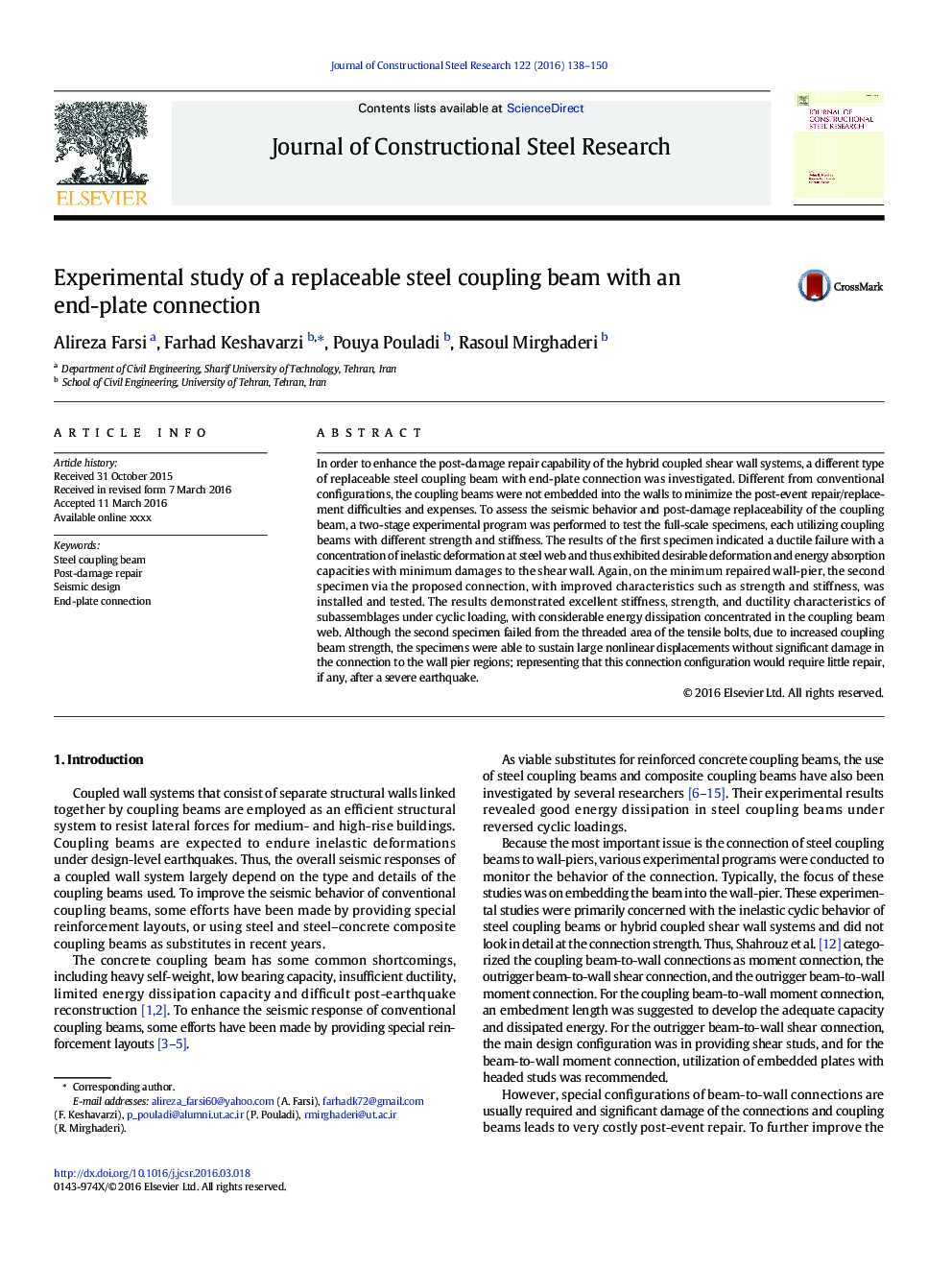| Article ID | Journal | Published Year | Pages | File Type |
|---|---|---|---|---|
| 6751344 | Journal of Constructional Steel Research | 2016 | 13 Pages |
Abstract
In order to enhance the post-damage repair capability of the hybrid coupled shear wall systems, a different type of replaceable steel coupling beam with end-plate connection was investigated. Different from conventional configurations, the coupling beams were not embedded into the walls to minimize the post-event repair/replacement difficulties and expenses. To assess the seismic behavior and post-damage replaceability of the coupling beam, a two-stage experimental program was performed to test the full-scale specimens, each utilizing coupling beams with different strength and stiffness. The results of the first specimen indicated a ductile failure with a concentration of inelastic deformation at steel web and thus exhibited desirable deformation and energy absorption capacities with minimum damages to the shear wall. Again, on the minimum repaired wall-pier, the second specimen via the proposed connection, with improved characteristics such as strength and stiffness, was installed and tested. The results demonstrated excellent stiffness, strength, and ductility characteristics of subassemblages under cyclic loading, with considerable energy dissipation concentrated in the coupling beam web. Although the second specimen failed from the threaded area of the tensile bolts, due to increased coupling beam strength, the specimens were able to sustain large nonlinear displacements without significant damage in the connection to the wall pier regions; representing that this connection configuration would require little repair, if any, after a severe earthquake.
Related Topics
Physical Sciences and Engineering
Engineering
Civil and Structural Engineering
Authors
Alireza Farsi, Farhad Keshavarzi, Pouya Pouladi, Rasoul Mirghaderi,
